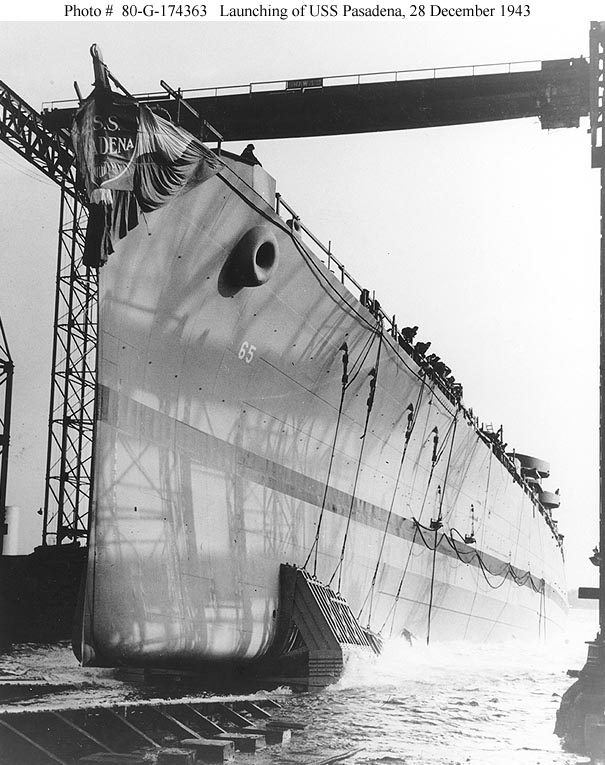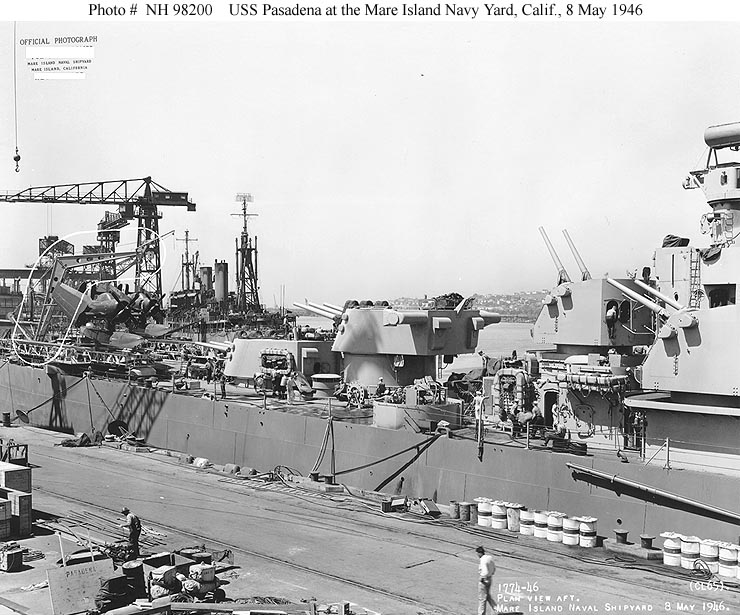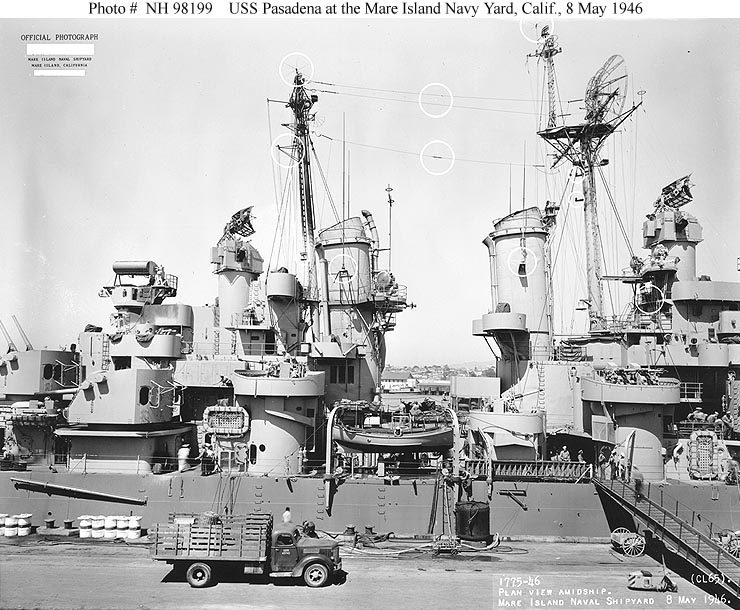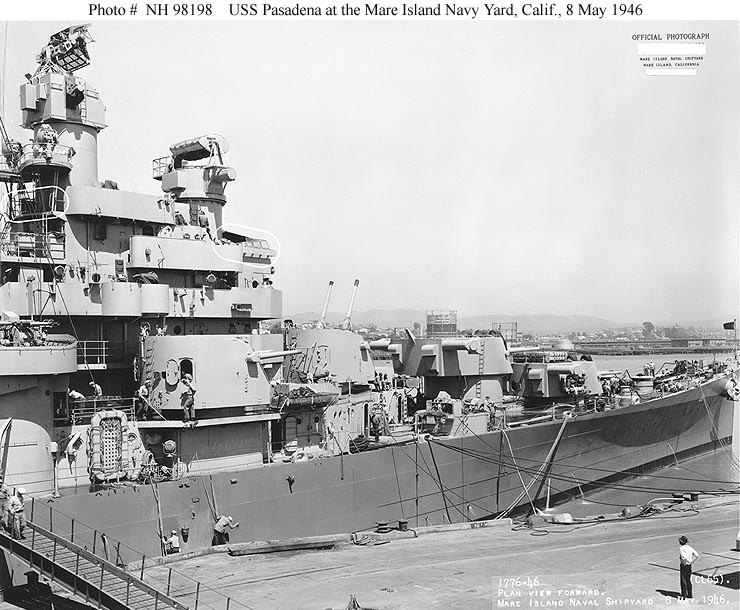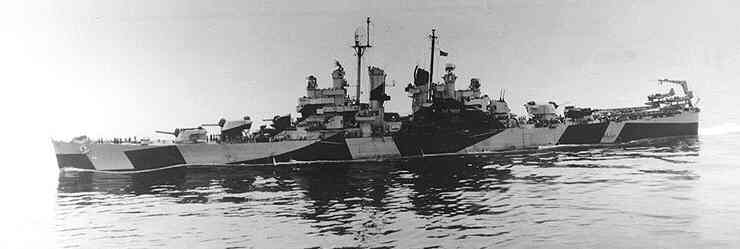
In February, the ships, now TF 58, moved against the Japanese home islands, then swung southeast to cover the landings on Iwo Jima, during which Pasadena added her guns to the bombardment group and performed patrol duties. Replenished at Ulithi, the force, with Pasadena in the inner screen, sortied again in mid-March to soften the way for the operation "Iceberg" assault force with strikes on the southern Japanese home islands and the northern Ryukyus in addition to those against the main assault target: Okinawa. At sea for 80 days, Pasadena, as flagship for CruDiv 17, participated in the night bombardments of Minami Daito (28 March and 10 May) and in the continuous strikes against other Japanese positions on Okinawa and Ky?sh? (1 April–30 May). After a brief respite at Ulithi and Leyte in June, the force sortied from Leyte Gulf for its last strikes against the enemy’s home islands in early July, and from mid-month to mid-August pounded military and industrial complexes on the Tokyo Plain, northern Honsh?, and Hokkaid? in anticipation of heavy resistance to what appeared inevitable—an invasion of Japan. On 15 August, however, Japan accepted surrender terms
